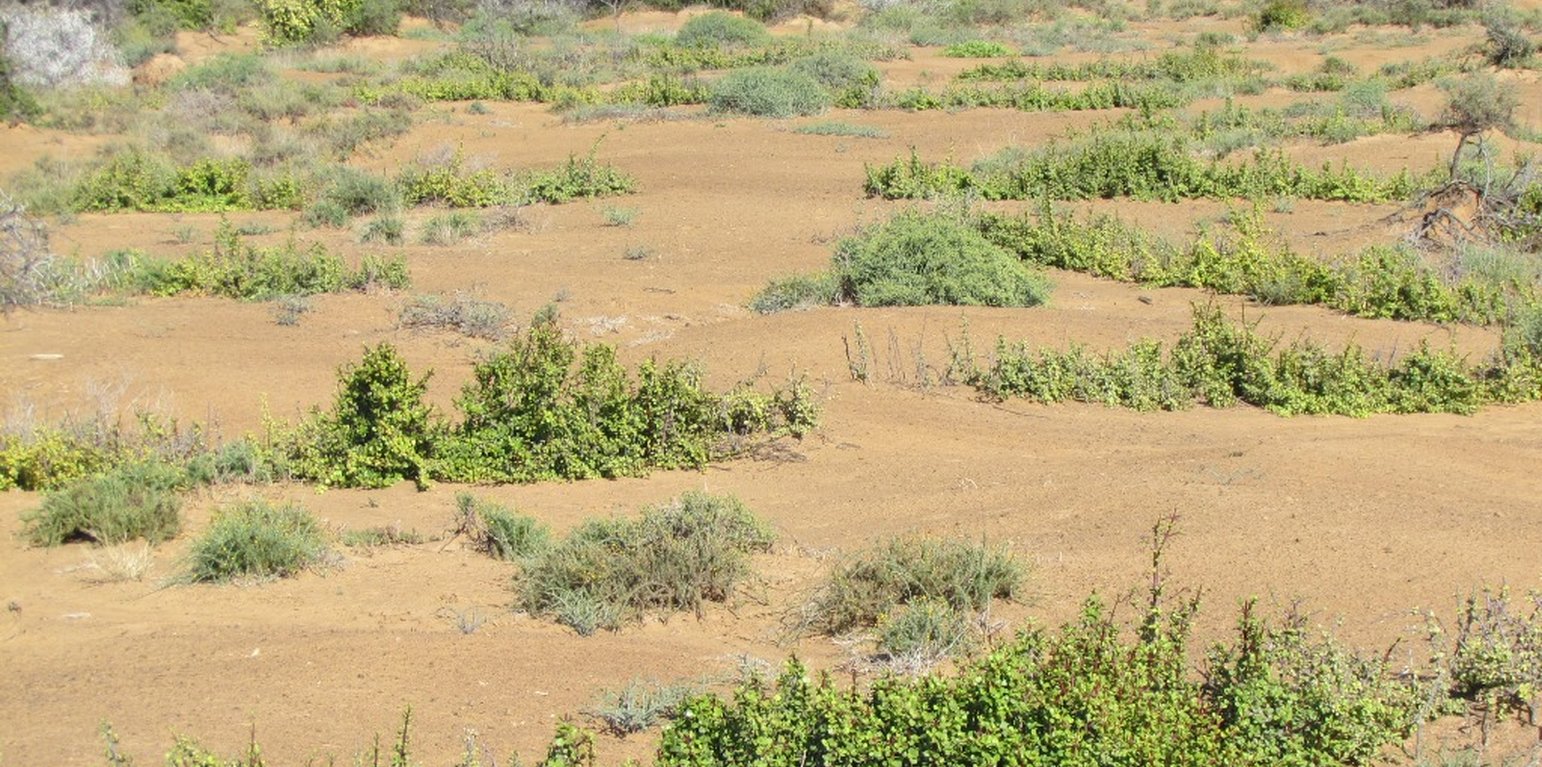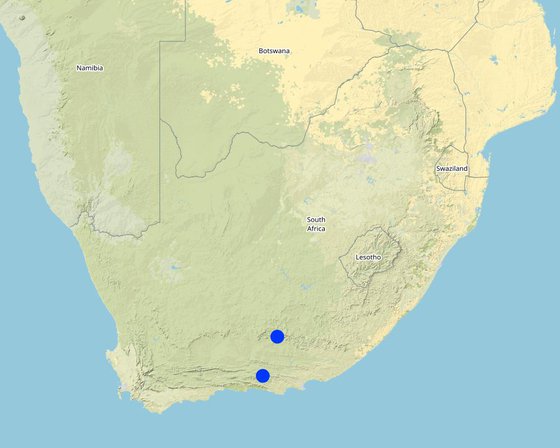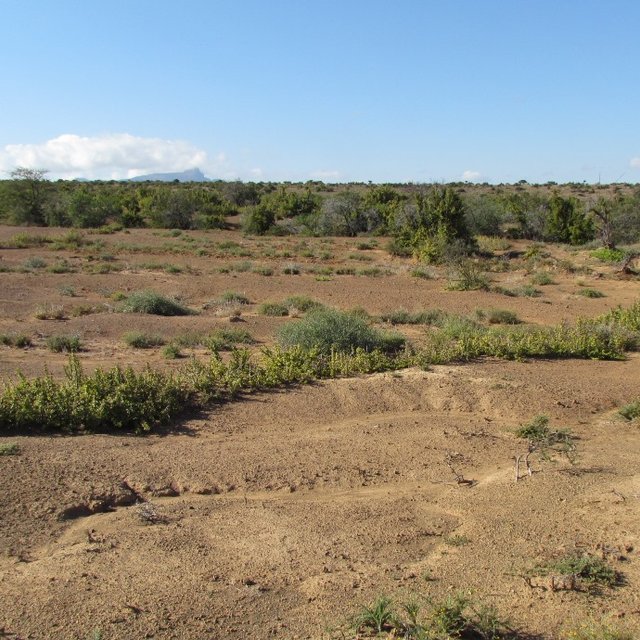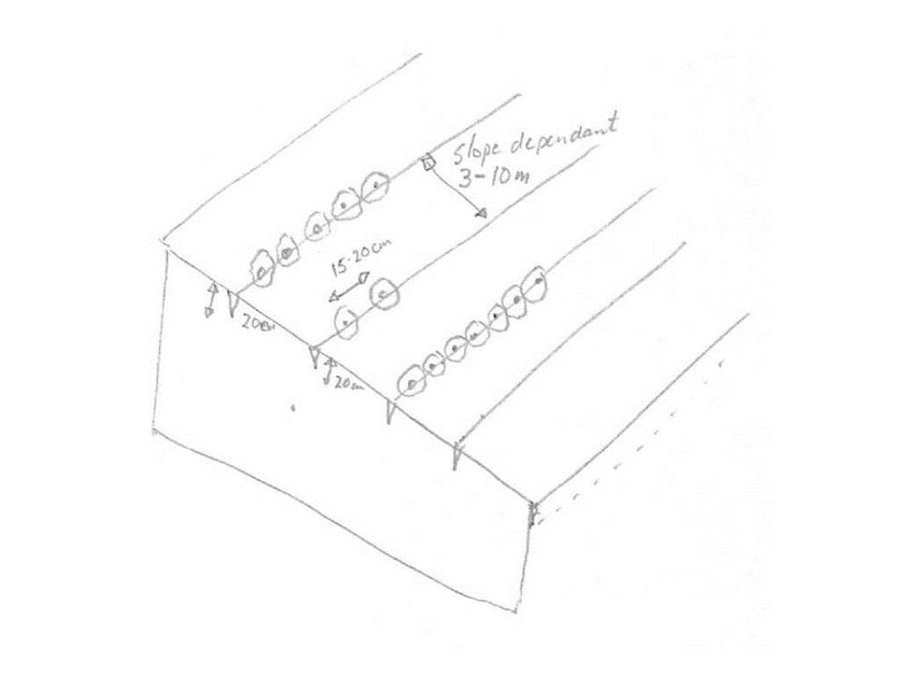



Due to severe land degradation over many decades of goat farming, the restoration of the so-called ‘thicket biome’ is taking place on a large scale in the Baviaanskloof Nature Reserve and Camdeboo National Park in the Eastern Cape of South Africa. The restoration projects have been introduced in parts of the thicket biome that receive 350 to 500 mm annual average rainfall. The main direct cause of degradation is overgrazing/browsing by goats (Boer and Angora) over the past 100 years. The overutilization of vegetation occurs mainly on valley bottoms and footslopes in mountainous areas where relatively fertile soils occur. This has resulted in large expanses of open vegetation canopy under which a high degree of runoff occurs - and subsequent soil loss leading to increased sediment loads in downstream drainage systems. The thicket biome vegetation (especially spekboom) is well known for its ability to sequester large amounts of carbon and therefore help towards mitigating climate change. The improved vegetation cover also contributes towards an increase in biodiversity, and therefore has a positive impact on tourism also. Establishment of spekboom in riplines can be used in combination with other technologies e.g. brush packing (laying cut bush on the soil surface), silt fences (low barriers across the slope) or fibre rolls. This technology can be employed in any similar semi-arid environment to restore degraded catchments - using locally appropriate plant species.
After identification of sites to be rehabilitated, this is followed by the identification of suitable sources of plant material for transplantation at the rehabilitation areas. In the case of the project in the Eastern Cape, spekboom cuttings of 30 to 50 cm in length were taken from existing stands, then left for one to two weeks in the sun to dry slightly before being transplanted in the rehabilitation sites. Care must be taken not to over-harvest healthy spekboom stands - not more than 30% should be removed.
Riplines need to be created along the contour by means of mechanisation or manual labour. Riplines should be between 3 and 10 meter apart - depending on the slope (closer on steep slopes) - 10 to 20 cm deep and just wide enough to plant the spekboom cuttings to a depth of at least 10 cm. Cuttings are planted between 15 to 20 cm apart within the ripline, so as to form a continuous barrier/sediment trap along the contour. The ripline promotes water infiltration into the rootzone of the cuttings. Cuttings need to be firmed-in with soil dug from the ripline. Watering the spekboom after planting is recommended – if possible. Brush packing (brush packing with thorny biomass to prevent grazing and provide a micro-climate for grass seed to germinate and establish) between riplines with local woody material (if available locally, and preferably thorny branches) is recommended to provide protection against grazing and to create a micro-climate for vegetation growth. In between riplines, silt fences or fibre rolls can be used to slow water runoff and to trap sediment. Maintenance includes the replanting of cuttings where mortality occurred.

Lieu: Eastern Cape, Afrique du Sud
Nbr de sites de la Technologie analysés: 2-10 sites
Diffusion de la Technologie: appliquée en des points spécifiques ou concentrée sur une petite surface
Dans des zones protégées en permanence ?:
Date de mise en oeuvre: 2010; il y a moins de 10 ans (récemment)
Type d'introduction









| Spécifiez les intrants | Unité | Quantité | Coûts par unité (Rand) | Coût total par intrant (Rand) | % des coût supporté par les exploitants des terres |
| Main d'œuvre | |||||
| Unskilled labour (including transport) | per day | 20,0 | 240,0 | 4800,0 | 100,0 |
| Equipements | |||||
| Picks, spades, wheel barrow, bow saw and pruning shears (renting equipment) | per day | 20,0 | 20,0 | 400,0 | 100,0 |
| Matériel végétal | |||||
| Planting material is free | |||||
| Planting material is free | |||||
| Autre | |||||
| Management (including transport) | per day | 2,0 | 600,0 | 1200,0 | 100,0 |
| Coût total de mise en place de la Technologie | 6'400.0 | ||||
| Coût total de mise en place de la Technologie en dollars américains (USD) | 533.33 | ||||
| Spécifiez les intrants | Unité | Quantité | Coûts par unité (Rand) | Coût total par intrant (Rand) | % des coût supporté par les exploitants des terres |
| Main d'œuvre | |||||
| Replanting of cuttings (unskilled labour - including transport) | per day | 10,0 | 240,0 | 2400,0 | 100,0 |
| Autre | |||||
| Management (including transport) | per day | 1,0 | 600,0 | 600,0 | 100,0 |
| Coût total d'entretien de la Technologie | 3'000.0 | ||||
| Coût total d'entretien de la Technologie en dollars américains (USD) | 250.0 | ||||